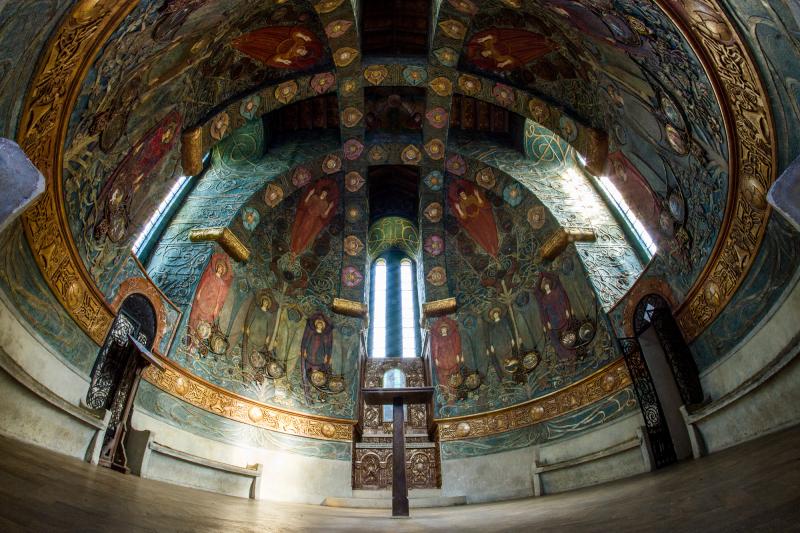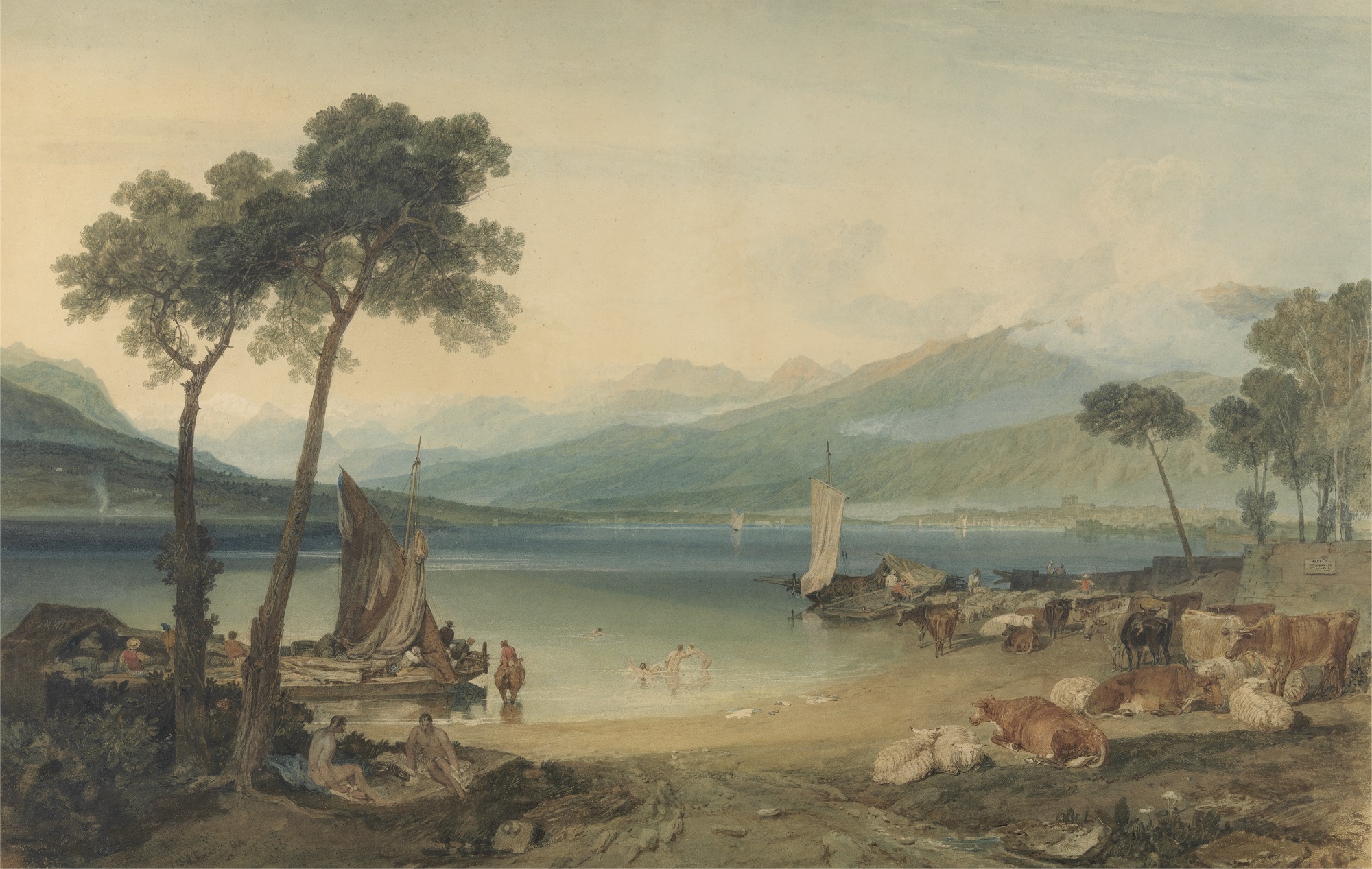Unto the Last: Two Hundred Years of John Ruskin, Watts Gallery–Artists' Village, review - a breath of fresh air | reviews, news & interviews
Unto the Last: Two Hundred Years of John Ruskin, Watts Gallery–Artists' Village, review - a breath of fresh air
Unto the Last: Two Hundred Years of John Ruskin, Watts Gallery–Artists' Village, review - a breath of fresh air
The former home of Victorian artists GF and Mary Watts is a restorative treat, even online

Museums and galleries have found innovative and varied ways to keep their collections within reach, and to bring us the many temporary exhibitions forced to close by the virus. But even the most dedicated gallery-goer may by now be tiring of online talks and tours, which so often make unreasonable demands on both guide and viewer and increasingly feel like a very poor substitute for the real thing.
For a breath of fresh air, try the Watts Gallery - Artists’ Village in the Surrey village of Compton, whose immersive online offering is as close to a day in the country as we might reasonably expect at the moment. Using the art app Smartify, curators at the former home of “England’s Michelangelo” - the painter of portraits and allegories GF Watts (1817-1904) - and his wife the artist Mary Watts (1849-1938), introduce highlights from the permanent collection and narrate a tour of its current temporary exhibition celebrating the Victorian art critic, painter and social reformer, John Ruskin.
 Curated by three PhD students from the Yale Center for British Art, Unto the Last: Two Hundred Years of John Ruskin explores Ruskin’s legacy through a variety of objects including paintings, prints and books, that connect his activities as an artist and critic to his thoughts on the economy, education and the environment. Tara Contractor, Victoria Hepburn and Judith Stapleton each speak with an engaging mixture of enthusiasm and expertise, and 12 concise talks, each one perfect for dipping into, take us through the exhibition in just 25 minutes (Pictured above: JMW Turner, Lake Geneva and Mount Blanc, 1802-5).
Curated by three PhD students from the Yale Center for British Art, Unto the Last: Two Hundred Years of John Ruskin explores Ruskin’s legacy through a variety of objects including paintings, prints and books, that connect his activities as an artist and critic to his thoughts on the economy, education and the environment. Tara Contractor, Victoria Hepburn and Judith Stapleton each speak with an engaging mixture of enthusiasm and expertise, and 12 concise talks, each one perfect for dipping into, take us through the exhibition in just 25 minutes (Pictured above: JMW Turner, Lake Geneva and Mount Blanc, 1802-5).
Limnerslease, the Wattses’ Arts and Crafts house at Compton, began life as a country retreat from smoggy London winters, but would eventually become the artists’ home. Here they found an ideal environment in which to work, and inspired by the ideas of John Ruskin and William Morris, they became prominent local figures, engaging apprentices and teaching pottery, with the Compton Pottery providing local employment well into the 1950s.
Villagers made the terracotta tiles that decorate the Watts Chapel (main picture), a wonderful Arts and Crafts building conceived and designed by Mary Watts in the 1890s, that, for now, can be explored via a beautifully designed 3D virtual tour available on the website. The tour includes short but informative curator talks on selected objects, and visits other highlights of the Artists’ Village, including the GF Watts Studio, though you’ll have to wait until the end of lockdown to see the Watts Gallery, opened in 1904 to display the work of GF Watts, and testament to the artist’s huge success within his lifetime. For now, the Watts at Home Smartify audio tour makes an excellent substitute with curators giving brief talks on favourite paintings and sculptures that vividly evoke the artists’ Surrey utopia.
- All tours and information can be accessed through the Watts Gallery - Artists' Village website
- Smartify is available through the usual app stores
- More visual arts reviews on theartsdesk
rating
Explore topics
Share this article
The future of Arts Journalism
You can stop theartsdesk.com closing!
We urgently need financing to survive. Our fundraising drive has thus far raised £49,000 but we need to reach £100,000 or we will be forced to close. Please contribute here: https://gofund.me/c3f6033d
And if you can forward this information to anyone who might assist, we’d be grateful.

Subscribe to theartsdesk.com
Thank you for continuing to read our work on theartsdesk.com. For unlimited access to every article in its entirety, including our archive of more than 15,000 pieces, we're asking for £5 per month or £40 per year. We feel it's a very good deal, and hope you do too.
To take a subscription now simply click here.
And if you're looking for that extra gift for a friend or family member, why not treat them to a theartsdesk.com gift subscription?
more Visual arts
 'We are bowled over!' Thank you for your messages of love and support
Much-appreciated words of commendation from readers and the cultural community
'We are bowled over!' Thank you for your messages of love and support
Much-appreciated words of commendation from readers and the cultural community
 Folkestone Triennial 2025 - landscape, seascape, art lovers' escape
Locally rooted festival brings home many but not all global concerns
Folkestone Triennial 2025 - landscape, seascape, art lovers' escape
Locally rooted festival brings home many but not all global concerns
 Sir Brian Clarke (1953-2025) - a personal tribute
Remembering an artist with a gift for the transcendent
Sir Brian Clarke (1953-2025) - a personal tribute
Remembering an artist with a gift for the transcendent
 Emily Kam Kngwarray, Tate Modern review - glimpses of another world
Pictures that are an affirmation of belonging
Emily Kam Kngwarray, Tate Modern review - glimpses of another world
Pictures that are an affirmation of belonging
 Kiefer / Van Gogh, Royal Academy review - a pairing of opposites
Small scale intensity meets large scale melodrama
Kiefer / Van Gogh, Royal Academy review - a pairing of opposites
Small scale intensity meets large scale melodrama
 Jenny Saville: The Anatomy of Painting, National Portrait Gallery review - a protégé losing her way
A brilliant painter in search of a worthwhile subject
Jenny Saville: The Anatomy of Painting, National Portrait Gallery review - a protégé losing her way
A brilliant painter in search of a worthwhile subject
 Abstract Erotic, Courtauld Gallery review - sculpture that is sensuous, funny and subversive
Testing the boundaries of good taste, and winning
Abstract Erotic, Courtauld Gallery review - sculpture that is sensuous, funny and subversive
Testing the boundaries of good taste, and winning
 Edward Burra, Tate Britain review - watercolour made mainstream
Social satire with a nasty bite
Edward Burra, Tate Britain review - watercolour made mainstream
Social satire with a nasty bite
 Ithell Colquhoun, Tate Britain review - revelations of a weird and wonderful world
Emanations from the unconscious
Ithell Colquhoun, Tate Britain review - revelations of a weird and wonderful world
Emanations from the unconscious
 Rachel Jones: Gated Canyons, Dulwich Picture Gallery review - teeth with a real bite
Mouths have never looked so good
Rachel Jones: Gated Canyons, Dulwich Picture Gallery review - teeth with a real bite
Mouths have never looked so good
 Yoshitomo Nara, Hayward Gallery review - sickeningly cute kids
How to make millions out of kitsch
Yoshitomo Nara, Hayward Gallery review - sickeningly cute kids
How to make millions out of kitsch
 Hamad Butt: Apprehensions, Whitechapel Gallery review - cool, calm and potentially lethal
The YBA who didn’t have time to become a household name
Hamad Butt: Apprehensions, Whitechapel Gallery review - cool, calm and potentially lethal
The YBA who didn’t have time to become a household name

Add comment